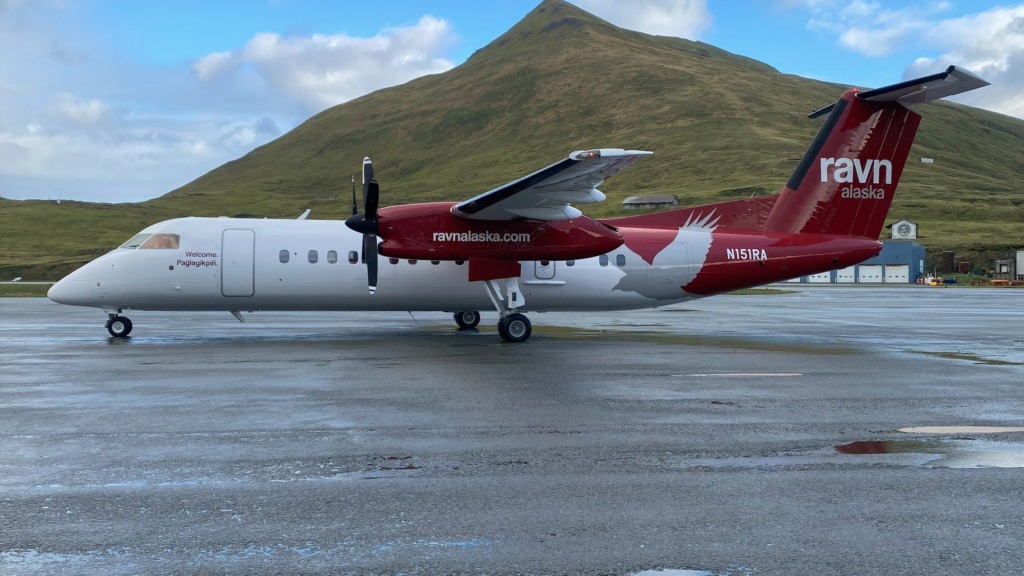Anchorage Daily News is reporting that in a stunning development, Ravn Alaska has officially ceased all operations as of Tuesday, August 5, 2025, effectively shuttering service throughout the state. Once a vital lifeline for many of Alaska’s rural communities, the carrier is now gone as it has been folded into parent company New Pacific Airlines.
The unexpected stoppage has left many communities scrambling to deal with a sudden lack of transportation options. In many areas of the state, Ravn’s air service is not a luxury, but rather, a necessity. Currently, the company’s website only displays this message: “We appreciate the years of service we were able to provide to Alaska communities. While we are no longer operating flights in Alaska, we’re grateful for the trust you placed in us during our time serving the region.”
A Quiet Shutdown And Shocked Communities
Ravn’s closure came without warning. On August 14, the airline published a brief statement and pulled flights from its schedule, causing widespread confusion. Additionally, 270 employees were suddenly jobless, while communities and airports were given little, if any, notice of Ravn terminating all services.
At its most recent peak, Ravn Alaska flew to a dozen destinations throughout the state of Alaska. It achieved this with a fleet of de Havilland DHC-8-100s and DHC-8-300s. Its final flight from Valdez to Anchorage landed with little fanfare, with its rich heritage fading into the background. Ravn Alaska was founded in June 1948, over 77 years ago.
This was the second time that Ravn had shut down operations, with the first being the COVID-19 pandemic. The company has been struggling financially and has removed 130 employees from its payroll. The 2020s have not been kind to this legendary airline, and although its recent peak stood at 12 destinations, this is significantly smaller than the airline’s route map in prior decades.
Fall Out For Rural Aviation In Alaska
In response to Ravn’s sudden collapse, ![]() Alaska Airlines signaled immediate plans to fill critical gaps. CEO Brad Tilden stated that Alaska Airlines would extend seasonal and cargo routes, expedite charter options to remote areas, and even coordinate a job fair for affected Ravn staff. This statewide expansion is as much about market dynamics as it is about ensuring that rural Alaskan communities continue to be linked to the outside world.
Alaska Airlines signaled immediate plans to fill critical gaps. CEO Brad Tilden stated that Alaska Airlines would extend seasonal and cargo routes, expedite charter options to remote areas, and even coordinate a job fair for affected Ravn staff. This statewide expansion is as much about market dynamics as it is about ensuring that rural Alaskan communities continue to be linked to the outside world.
However, filling the void left by Ravn isn’t straightforward. Airlines such as Alaska do not typically keep spare aircraft to support a sudden expansion, and Alaska’s operating model is very different from Ravn Alaska’s. Officials have also raised alarms that delays in new carrier bids, combined with reduced federal Essential Air Service (EAS) funding, could leave residents stranded without timely transportation.
|
Alaska Airlines Fleet |
Number In Fleet (Data From Planespotters.net) |
|---|---|
|
Boeing 737-700 |
11 |
|
Boeing 737-800 |
59 |
|
Boeing 737-900 |
One |
|
Boeing 737-900ER |
79 |
|
Boeing 737 MAX 8 |
Eight |
|
Boeing 737 MAX 9 |
80 |
|
Boeing 737-700F |
Three |
|
Boeing 737-800BCF |
Two |
|
Embraer E175 (Horizon) |
89 |
|
Total |
332 |
Ravn has been shrinking for month after month, and while the announcement caught some by surprise due to how little information has circulated about the company’s finances, it’s far from unexpected when examining Ravn Alaska’s financial performance. With the company now defunct, new airlines will need to step in, and new EAS contracts will be awarded to ensure continuous air service.
Looking At Ravn Alaska’s Legacy
Formerly based in Anchorage, Ravn Alaska has been known by several names in its nearly eight-decade-long history. It was originally known as Economy Helicopters when it commenced operations in the late 1940s, then renamed itself to Era shortly afterwards. The Era name was slightly modified, first being labeled as Era Helicopters, then as Era Aviation.
As regional service has deteriorated so severely, stakeholders are especially looking at new carriers skeptically, as none match Ravn’s scale or reach. Anchorage-based New Pacific Airlines (parent company of Ravn Alaska) shifted focus to destinations in the continental US and abroad, leaving little bandwidth to restore local operations.
Ultimately, this closure demonstrates the difficulties of the air market in Alaska. Even for a notoriously low-margin business, the Alaskan airline industry presents airlines with a geographically huge area that features a small, spread-out population. Demand is hard to come by, while operating costs are higher.





